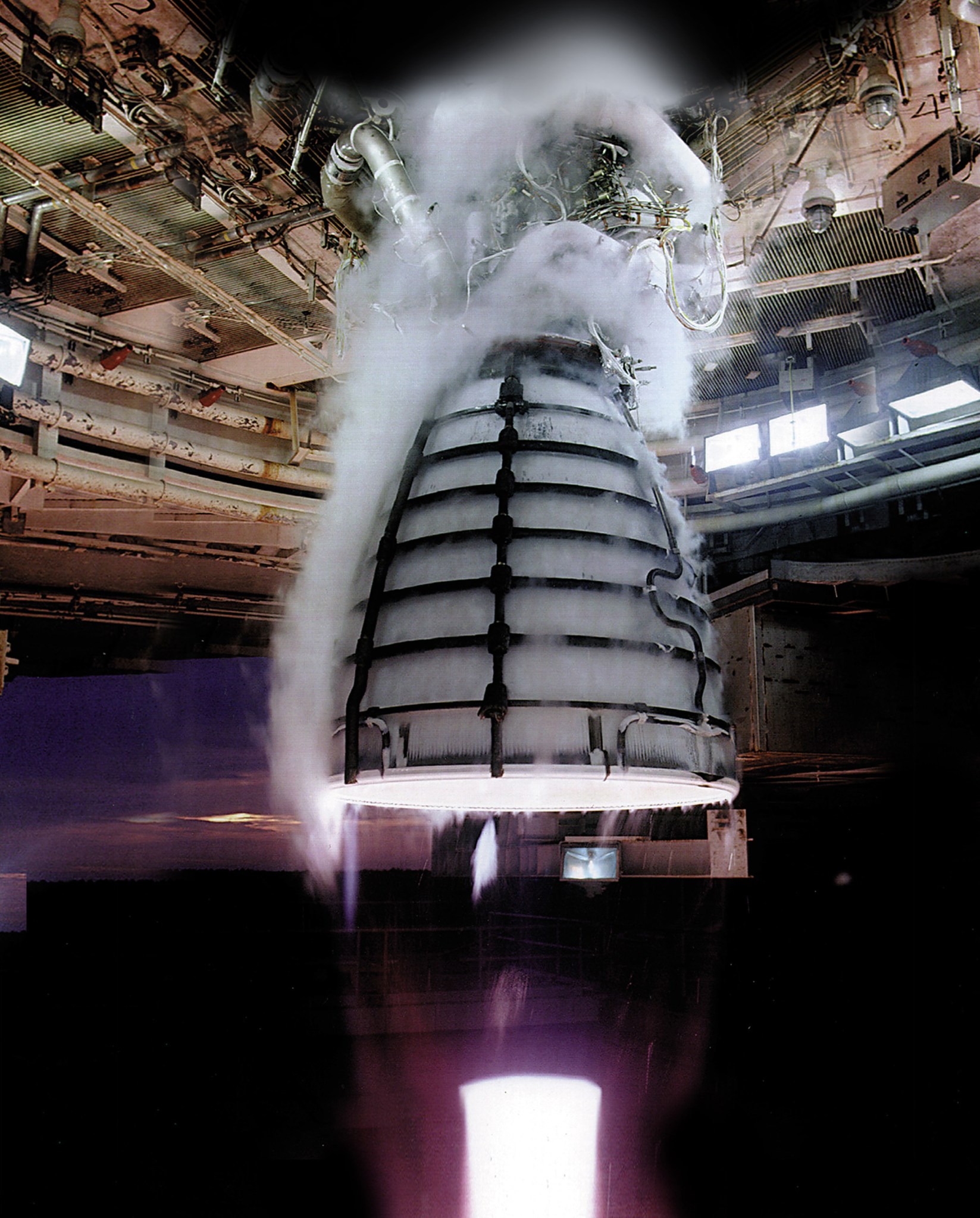In the iconic comic-book series, “Superman,” the main character, Clark Kent, looks like your average Joe. Under the ruse of a three-piece suit and glasses, Kent’s true identity is “Superman,” who transforms into his mighty persona to do battle for the good of mankind. In the rocket engine world, the RS-25 is Clark Kent.
Four RS-25 engines will power the core stage of the world’s most powerful rocket, NASA’s Space Launch System. Towering more than 200 feet tall with a diameter of 27.6 feet, the core stage will store cryogenic liquid hydrogen and liquid oxygen that will feed the vehicle’s RS-25 engines.
SLS, with its unprecedented power and capabilities, will launch crews on the agency’s Orion spacecraft on missions to explore multiple, deep-space destinations. The 70-metric-ton (77-ton) configuration will stand at 322 feet — taller than the Statue of Liberty.
“During the 30-year run of the Space Shuttle Program, the RS-25 achieved very high demonstrated reliability,” said Garry Lyles, chief engineer for the Space Launch System Program Office at NASA’s Marshall Space Flight Center in Huntsville, Alabama, which manages the SLS Program for the agency. “And during 135 missions and numerous related engine tests, it accumulated over 1 million seconds — or almost 280 hours — of hot-fire experience. With that kind of reliability, we knew it would be the best engine to power SLS.”
The RS-25s may look like that Clark-Kent-average-Joe persona from the outside, but when ignited, the engines will reveal their “Superman” identity — pushing the SLS 73 times faster than an Indianapolis 500 race car.
And if that doesn’t seem superhero enough:
- The first configuration of the rocket, called Block 1, uses four RS-25 engines and two five-segment solid rocket boosters to reach a max thrust of 8.8 million pounds that’s more than 31 times the total thrust of a 747 jet.
- One RS-25 could power 846,591 miles of residential street lights – a street long enough to go to the moon and back and circle the Earth 15 times.
- The RS-25 turbopumps rotate 580 times per second, or nearly 35,000 rpm. By comparison, NASCAR engines and Formula 1 engines operate in the vicinity of 9,000 and 19,000 rpm, respectively.
“The RS-25 is the only engine with the thrust, reliability and high performance needed for SLS,” said Steve Wofford, SLS Liquid Engines program manager at the Marshall Center. “We did have to modify the engines to prepare them for such a heavy-lift vehicle, including improvements like a new engine controller unit. We also increased the number of engines from three to four and the power level of each one.”
Engines on the shuttle ran at 491,000 pounds of thrust (104.5-percent of rated power level). After analyzing temperature and other factors on the engine, the power level was increased for SLS to 512,000 pounds of thrust (109 percent of rated power level).
The SLS Program has an inventory of 16 RS-25 flight engines, built by Aerojet Rocketdyne of Sacramento, California. The engines are available for the first four SLS missions, and two development engines are being used for ground testing. NASA completed the first developmental test series on the RS-25 engine in 2015, and the first RS-25 flight engine test in March 2016 on the A-1 test stand at NASA’s Stennis Space Center near Bay St. Louis, Mississippi.
“We get the question a lot of why we test such a reliable engine,” Wofford said. “Anytime modifications are made to rocket hardware, it needs to be tested at different conditions to ensure it works as it is designed to do.”
The RS-25s will have a chance to flex their muscles on the first flight test of SLS with Orion in 2018. That flight will carry an uncrewed Orion spacecraft beyond the moon, deeper than any human-rated spacecraft has gone, to test the performance of the integrated system. As the SLS evolves, it will provide an unprecedented lift capability of 130 metric tons (143 tons) to enable deep-space missions, including NASA’s journey to Mars.
For information about NASA’s SLS Program, visit:



























